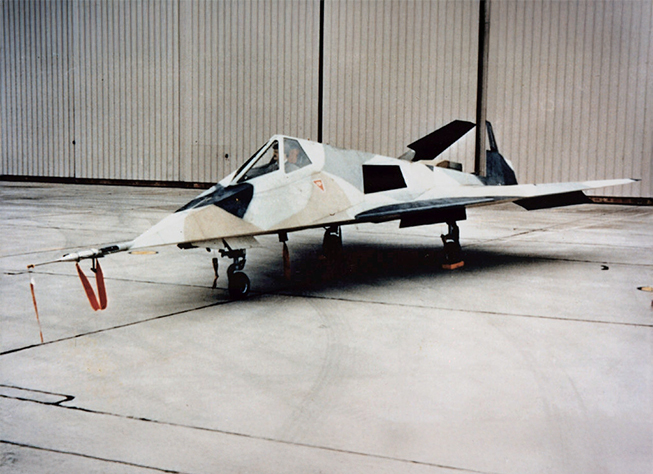In the early 1970s, a DARPA study brought to light the extent of vulnerabilities of U.S. aircraft and their on-board equipment to detection and attack by adversaries, who were deploying new advanced air-defense missile systems. These systems integrated radar-guided surface-to-air missiles (SAMs) and air-launched radar-guided missiles, all networked with early-warning, acquisition, and targeting radars, and coordinated within sophisticated command and control frameworks.
To mitigate these growing threats, DARPA embarked on a program to develop strategies and technologies for reducing radar detectability, including:
- Reduction of radar cross section through a combination of shaping (to minimize the number of radar return spikes) and radar absorbent materials
- Infrared shielding
- Exhaust cooling and shaping, and enhanced heat dissipation; reduced visual signatures
- Active signature cancellationI
- Inlet shielding
- Windshield coatings
In the mid-1970s, DARPA oversaw the development of Have Blue, the first practical combat stealth aircraft, which made its first test flight by the end of 1977. This led to the procurement by the Air Force of the F-117A stealth fighter, which became operational in October 1983. A follow-on development, the Tacit Blue aircraft, could operate radar sensors while maintaining its own low radar cross-section. This laid foundations for development of the B-2 stealth bomber.
Stealth aircraft destroyed key targets in conflicts in:
- Iraq, both in the 1991 Desert Storm operation and in 2003 during Operation Iraqi Freedom
- Afghanistan during Operation Enduring Freedom in 2001
- Libya in 2011
Complementing the key contributions of stealth capabilities in these missions was Department of Defense’s use of other technologies, including DARPA-enabled precision-guided munitions, which were deployed by stealth and non-stealth aircraft.
Since their initial development and deployment, stealth technologies have been applied to a wide range of weapon systems and military platforms, among them missiles, helicopters, ground vehicles and ships.
